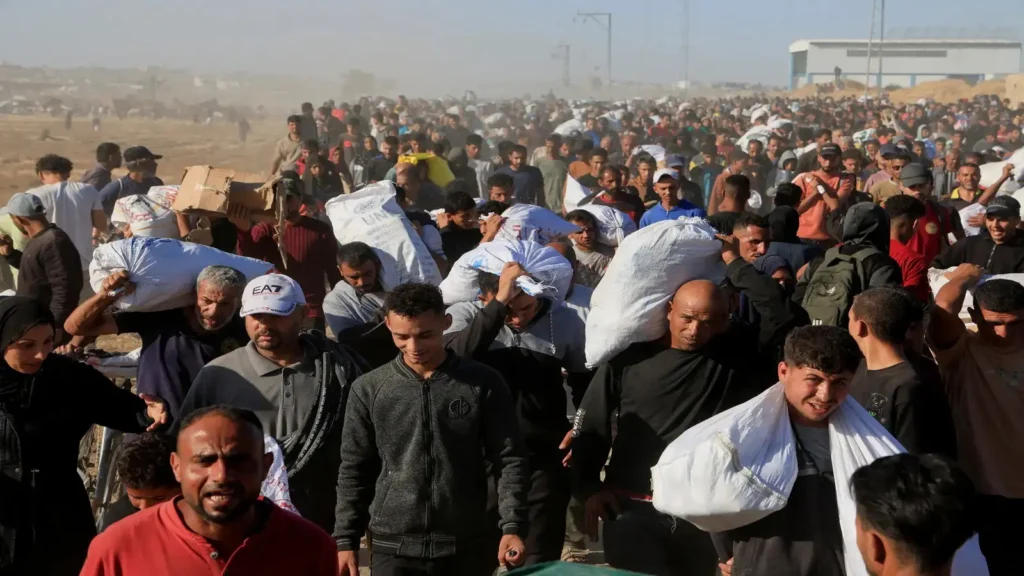In the southern Gaza Strip, a desperate search for food ended in catastrophe as dozens of Palestinians were killed and injured during a chaotic stampede at an aid distribution point in Khan Younis. The site, managed by the controversial GHF under tight security, became a scene of panic and death when a crowd surge turned violent.
Thousands of displaced people had gathered at the location before dawn, most of them from nearby tents in al-Mawasi. The distribution site had been closed for two days, adding to the tension and hunger that gripped the waiting masses. As the gate finally opened through a narrow corridor barely seven meters wide, a sudden rush of people erupted, trapping many in the tight, fenced-in passage.
Witnesses described how gas bombs and pepper spray were deployed from security personnel and quadcopters hovering overhead, sparking panic and chaos. People were unable to move forward or backward. Many were trampled, suffocated, or shot in the confusion. Bodies lay crumpled on the ground, and injured civilians, including children and the elderly, were rushed away by tuk-tuks and carts.
Among the injured was a young man who collapsed during the crush. He lost consciousness and was mistakenly placed alongside the dead before regaining some awareness. His face and side were bruised and bloodied from being stepped on. Now recovering, he reflected on the daily danger of seeking aid, driven by hunger and responsibility for his younger siblings, especially in the absence of their parents who remain abroad.
Another young man, a student supporting his family, had gone to the same distribution point earlier that day. Noticing the growing tension and unusually tight crowding, he decided to step back, sensing the risk. Just as he turned to leave, he was struck in the leg by a bullet fired from above. His cousin was also wounded. As he now awaits surgery, he expressed his disbelief at how even retreating did not spare him from harm.
Dozens were hospitalized following the tragedy, with several still in critical condition. The death toll reached at least 21, including individuals who died from suffocation and others who succumbed to injuries caused by stampede or gunfire. Survivors described a scene of inescapable pressure, choking smoke, and metal fences that turned the narrow corridor into a death trap.
Aid seekers say they return to these chaotic scenes daily because there are no alternatives. With borders sealed, humanitarian aid blocked, and markets inaccessible due to soaring prices, flour has become a lifeline. Some said securing a few kilos of it feels like a holiday in the midst of suffering.
Many in Gaza feel abandoned and question how such basic aid distribution can be allowed to unfold with no order or international supervision. The recurring deaths have sparked global concern, with mounting criticism that the aid efforts in their current form lack neutrality, safety, and dignity.
One father of six, now recovering from a head wound sustained in the same incident, summed up the desperation: “We go there knowing we might not come back. But if we do, it means we’ve found food for our children. That’s the only choice we have left.”

